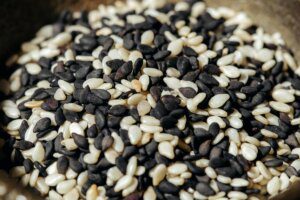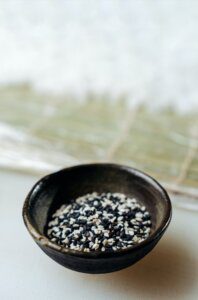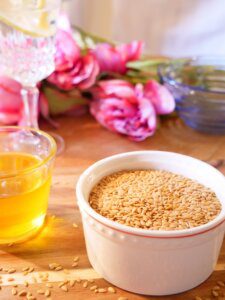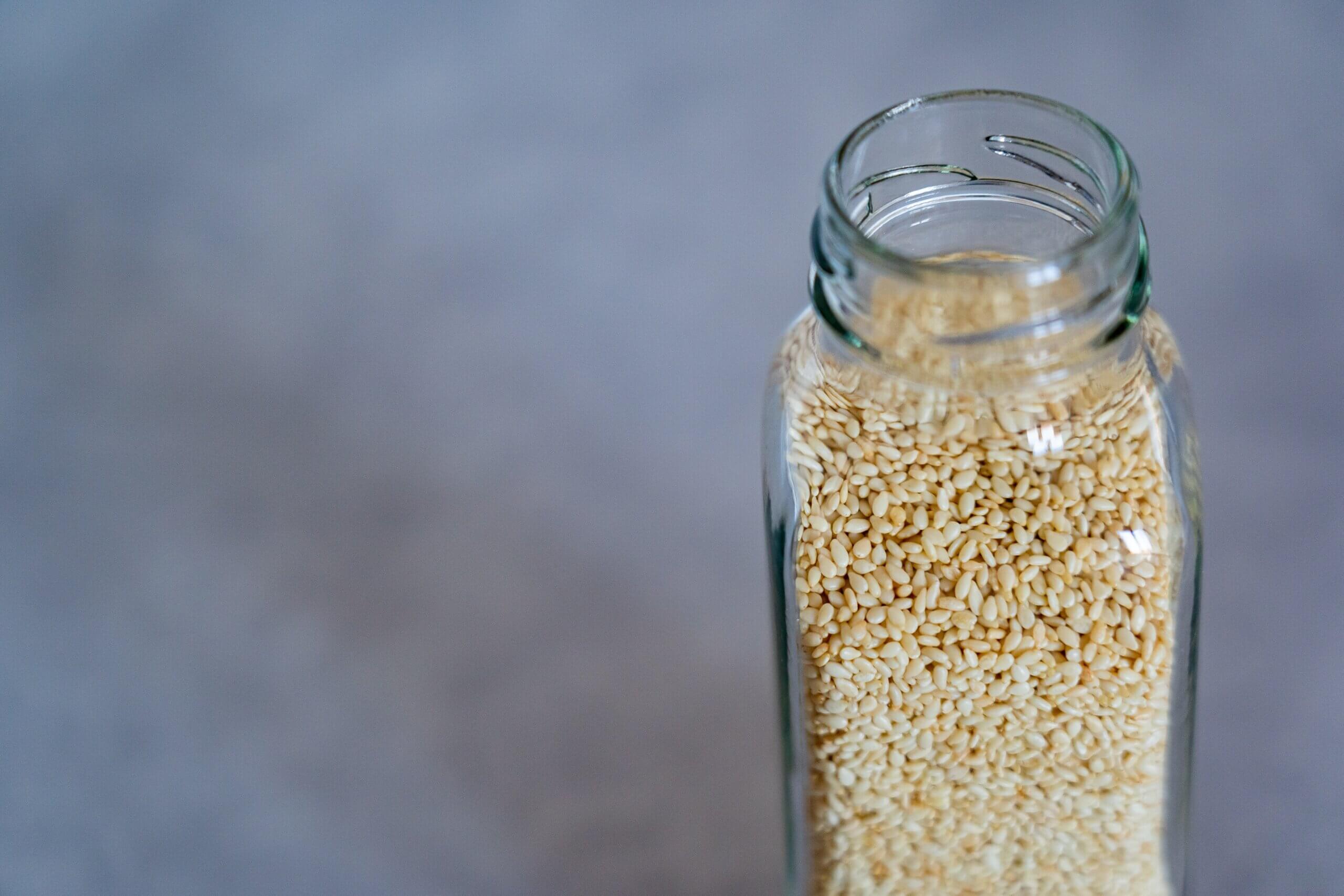For thousands of years, human culture has included sesame seeds—those little, tasty marvels. But have you ever questioned where do sesame seeds come from Join us on an amazing trip as we explore the origins of sesame seeds and learn about their interesting past. Let’s explore the history of these adaptable and nutritious seeds, from early farming to today’s trade.

History of the Sesame Seeds
Sesame seeds country of origin
Sesame seeds have a long history; Sesame seeds may have been cultivated in Mesopotamia (the modern-day countries of Iraq and Syria) as early as 4000 BCE, according to archaeological research.
Sesame seeds originated in Africa and then across the world via trade routes and cultural exchanges. Sesame seeds have been used by the ancient Egyptians for both culinary and medicinal uses. Even sesame seeds were revered as a representation of life.
About the year 2000 BCE, the cultivation of sesame seeds moved to the Indian subcontinent, where it became a staple of Indian cuisine. Today, India ranks among the nations that produce and eat the most sesame seeds.
In India, sesame seeds have an important place in Ayurveda, the traditional Indian system of medicine, and have long been a part of India’s culinary traditions.
They have become popular in Ayurvedic traditions because of their many health advantages, including as oil, paste, and whole seeds.
Sesame seeds became more popular throughout Asia, especially in China, Japan, and Korea. Sesame seeds are viewed as a sign of luck and prosperity in Chinese culture. They have become popular in many different meals, desserts, and sauces.
Sesame seeds have become a common element in Middle Eastern dishes like halva, a sweet dessert, and tahini, a sesame paste. Sesame seeds are used in both sweet and savoury dishes and have a strong culinary impact in nations like Turkey, Iran, and Israel.
Sesame seeds were widely spread by European colonialism and exploration in the 15th and 16th centuries.
African slaves brought sesame seeds to the United States in the seventeenth century. From their home nations, where sesame has been grown for many years, they took the seeds with them.
Sesame seeds gained popularity in American cooking over time, especially in baked goods, Asian-inspired foods, and as a topping for burgers and buns.
States like Texas, Oklahoma, and New Mexico are significant contributors to the sesame seed business, making the U.S. one of the top producers of sesame seeds in the world today.
Sesame seeds are farmed and eaten on a global scale nowadays. Rich nutty flavour, versatility in the kitchen, and nutritional advantages make them highly loved.
They are still a staple in many cuisines and cultures all over the world, whether they are added to bread, spreads, sauces, or used as a garnish.
How did sesame seeds spread?
Through a variety of channels, including trade routes, exploration, and cultural interaction, sesame seeds have spread.
They were spread to new areas as civilizations advanced and interacted with one another.
Sesame seeds have spread widely because of traders and explorers who transported them through ancient trade routes like the Silk Road, a route that linked various regions of Asia, Europe, and Africa.
The seeds also spread because they were incorporated into the local cuisines and farming methods of various cultures.
They have been widely cultivated and eaten all over the world because of their integration into many nations’ culinary traditions over time.

Where do Sesame Seeds Come From
The sesame plant (Sesamum indicum), which produces sesame seeds, has a long history. In Africa, the areas of Sudan and Ethiopia are believed to be their places of origin.
Through trade and exploration, sesame seed cultivation and use later spread to several places all over the globe.
They eventually spread to several cities on various continents as their popularity increased.
Several well-known cities where sesame seeds are grown and used are:
Khartoum, Sudan
As one of the locations thought to be the origin of sesame seeds, Khartoum was important to the early cultivation and distribution of this crop.
Alexandria, Egypt
Egypt’s Alexandria was an important port and a centre for the trade of many goods, including sesame seeds. It was essential to the spread of sesame seeds across the Mediterranean region.
Mumbai, India
Mumbai, being a major commercial and trading city, has played a vital part in the sesame seed trade inside the nation and abroad. India is one of the top-producing nations of sesame seeds today.
Beijing, China
China is an important sesame seed grower. As the nation’s capital, Beijing has long been active in sesame seed production, trading, and usage.
Istanbul, Turkey
Sesame seed farming and traditional culinary use have a long history in Turkey. Sesame seed trade and culinary customs have been centred in Istanbul, a cultural and economic centre.
Tokyo, Japan
Sesame seeds are frequently used in Japanese cooking, and since Tokyo is the country’s capital, it has long served as a hub for sesame seed-related culinary traditions.

Traditional Uses: Ayurvedic and Medical
Sesame seeds are seen as being very nutritious and having medicinal powers in Ayurveda, which gave them importance. They are believed to enhance general wellness by balancing the three doshas (vata, pitta, and Kapha).
Nutritional Value
If you’d like more information in-depth you can read this: Black Sesame Seeds: 16 Health Benefits And Nutritional Values
Sesame seeds are a rich source of vitamins, minerals, and healthy fats like calcium, iron, and magnesium. They are known for having a large amount of antioxidants, which work to fight off free radicals that are harmful and lessen oxidative stress.
Related: 4 Incredible Natural Sources of Vitamin K to Incorporate into Your Diet
Digestive Health
Sesame seeds are utilized in Ayurvedic formulations to help digestion and promote digestive health. They are thought to enhance nutritional absorption and boost digestive fire (Agni).
Related: Diet and Nutrition: 10 Incredible Ways to enhance your eating habits.
Joint Health
To support joint health, sesame oil, which is made from sesame seeds, is frequently used in Ayurvedic massages and therapies. According to popular belief, it nourishes the joints and eases pain.
Skin and Hair Care
Sesame seeds are well known for their hydrating and regenerating qualities in the skin and hair care industry. To hydrate the skin, encourage a glowing complexion, and strengthen hair, they are used in Ayurvedic skincare and haircare products.
Ayurvedic Preparations
Sesame seeds are used in a variety of Ayurvedic preparations, including sesame paste (tila paka), sesame oil, and medicinal oils for use on the skin.
Tip: Sesame seeds have traditionally been used in Ayurvedic treatments, but because each person’s outcomes may vary, it is always advisable to seek the advice of a skilled Ayurvedic practitioner or healthcare provider before using them for any particular health issues.
Sesame Farming
Sesame farming sometimes referred to as sesame cultivation or sesame production, entails growing sesame plants to collect their seeds. Asia, Africa, and South America are just a few of the regions throughout the world where sesame farming is still a common activity.
Ideal Growing Environments
A warm climate is ideal for growing sesame plants, which are normally grown in areas where the temperature ranges from 20 to 30 degrees Celsius (68 to 86 degrees Fahrenheit). They are relatively resistant to drought and need well-drained soil.
Seed Varieties
Sesame seeds are grown for profit reasons in several different types. The colour, amount of oil, and flavour characteristics of these varieties can change. White, black, and brown sesame are popular varieties.
Planting and Cultivation
Sesame seeds are often sown straight into the ground for planting and cultivation. Small and shallowly buried, the seeds are. They need enough moisture for germination, and after 45 to 60 days from seeding, the plants normally begin to bloom.
Growth and Harvest
Sesame plants grow to a height of around 3 to 6 feet and are harvested every year. Delicate white or pink flowers are produced, and they eventually turn into seed capsules.
The chosen seed maturity level determines when to harvest the seeds as they mature in these capsules. When the seed pods turn brown, signalling that the seeds are ready for collecting, harvesting is normally carried out.
Processing after Harvest
To lower moisture content and guarantee seed quality, sesame plants are often dried after harvest. To extract the seeds from the capsules, dried plants are threshed.
Before they are ready for additional processing or packaging, the seeds are first cleansed to get rid of any harmful substances.
Uses and Applications
Sesame seeds can be used in a broad variety of ways and have many different uses. Because of their nutty flavour and crunchy texture, they are a common culinary component in many different cuisines around the world.
Extracted from the seeds, sesame oil is frequently used in cooking, as a condiment, and in the creation of many different culinary products. Tahini, sesame paste, and skin care products containing sesame oil are also made from sesame seeds.
Related: How to Toast Sesame Seeds: Unlocking the Flavors within
Sesame farming is essential to world agriculture and offers many farmers options for a living. They are a helpful addition to farming methods all around the world because of their nutritional worth and culinary adaptability.
Where are sesame seeds grown in India?
Gujarat, Rajasthan, Maharashtra, Madhya Pradesh, Andhra Pradesh, Telangana, and Tamil Nadu are just a few of the Indian states where sesame seeds are farmed.
Which state is famous for sesame seeds?
In India, Gujarat is known for its sesame seed production.
What plant do sesame seeds come from?
The annual flowering plant Sesamum indicum, a member of the Pedaliaceae family, is the source of sesame seeds
What is the Indian name for sesame seeds?
Sesame seeds are known in India as “til” or “til seeds.”
Which country is best for sesame seeds?
The top nations known for producing high-quality sesame seeds are India, Myanmar, and Sudan.
In which soil sesame is grown in India?
Sesame usually grows on fertile, well-drained soils. It does well in a variety of soil types, such as sandy, loamy, and clayey ones. However, it favors soils with a pH range of 6 to 7.5 that are well-drained.
Does India export sesame seeds?
Yes, one of the main nations exporting sesame seeds is India. It has an important base in the worldwide sesame seed market and is known for producing high-quality sesame seeds. Indian sesame seeds are valued for their high nutritional content, flavour, and scent. To meet the need for sesame seeds for food and industrial purposes, they are exported to numerous nations throughout the world.
In conclusion, the farming of sesame has been done for a very long time. Sesame farming has proven itself as a worthy effort, from its roots in ancient civilizations to its broad cultivation in many parts of the world today.
The sesame plant’s seeds have uses in medicine and culture in addition to being used in food. Sesame cultivation continues to support world agriculture and supply us with the wholesome and fragrant sesame seeds we love thanks to its capacity to grow in warm areas and its adaptability in many different uses.
So, keep in mind the wonderful journey that these small seeds took from the fields to your plate the next time you sprinkle sesame seeds on your food or enjoy the rich flavour of sesame oil.


You’re a star!